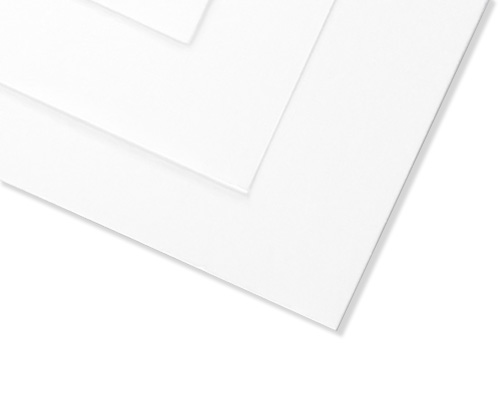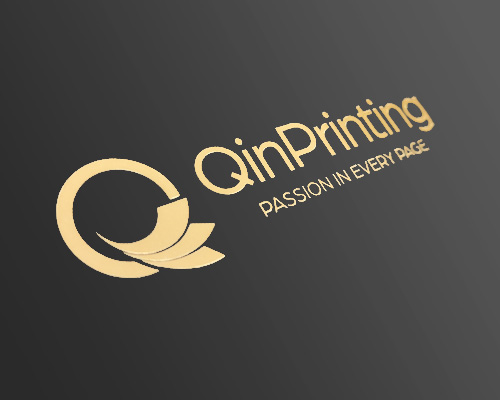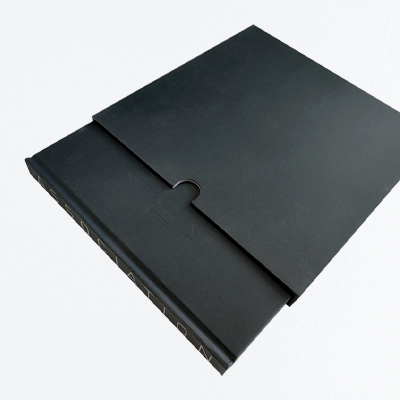Hardcover Binding
Hardcover binding—which is also called “casebound” or “case binding”—is the binding method by which we sew the inside pages together and bind them, together with the end sheets, into a hard casing made of a rigid cardboard cover wrapped with a printed sheet of cover paper, vinyl, cloth, or leatherette. The book spine may be square-shaped or rounded. The spine is also a printable area where we can print book title, author’s name, the publisher’s name, and any other design or logo. Hardcover binding offers a beautiful, professional look and the highest level of protection of any binding style.
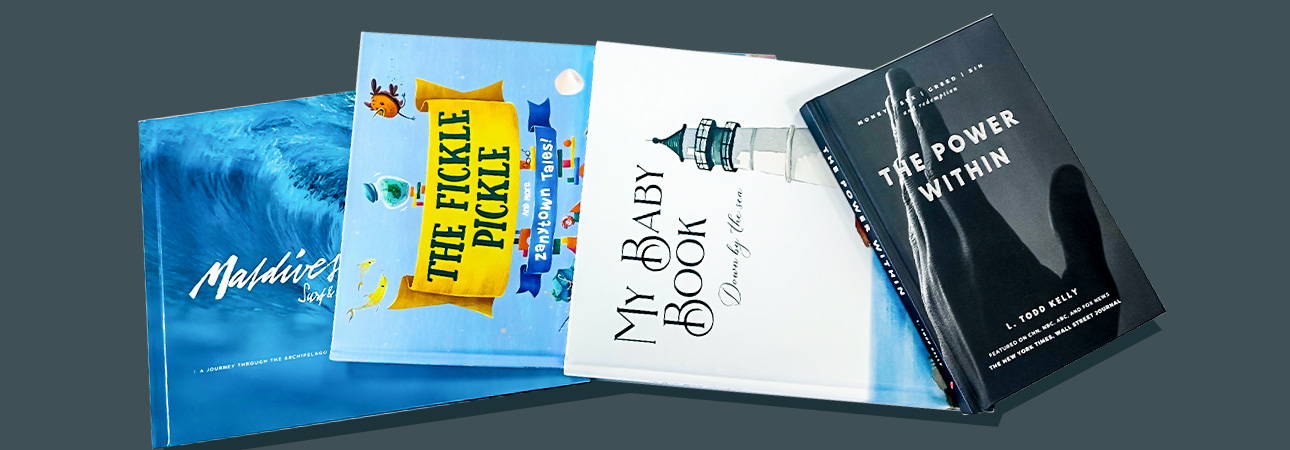
What Is Hardcover Binding?
At QinPrinting, we recommend “sewn hardcover” binding rather than glue-only binding, which is all some other printing services offer. With sewn hardcovers, you get a book that’s not only robust and secure but also more beautiful to see and to handle, for a negligible difference in cost. Your choice of binding always depends on the genre, style, book length, your budget, and several other factors, of course, but if you’re investing in hardcovers, it makes sense to make them as good as they can be. Hardcover binding gives high-end results which always impress. Also, you can open a sewn hardcover binding flat with no damage to the spine.
How We Make Hardcover Bindings
First, we lay out the interior pages on a larger sheet, organized into “signatures”. Then we print the sheets before folding. Next, we collate the signatures in order and sew the interior pages together. Next, we glue them and cut the interior pages. Meanwhile, we wrap the cloth or printed paper on grayboard to create the hardcover. Finally, we glue the interior pages and hard cover together. Sewn hardcover binding is the most resilient and professional-looking option, especially if you add finishes such as embossed titles, debossed titles, soft touch lamination, gilt edges, and metallic foil stamping; or a dust jacket, a slip case, marker ribbons, and sewn decorative headbands.
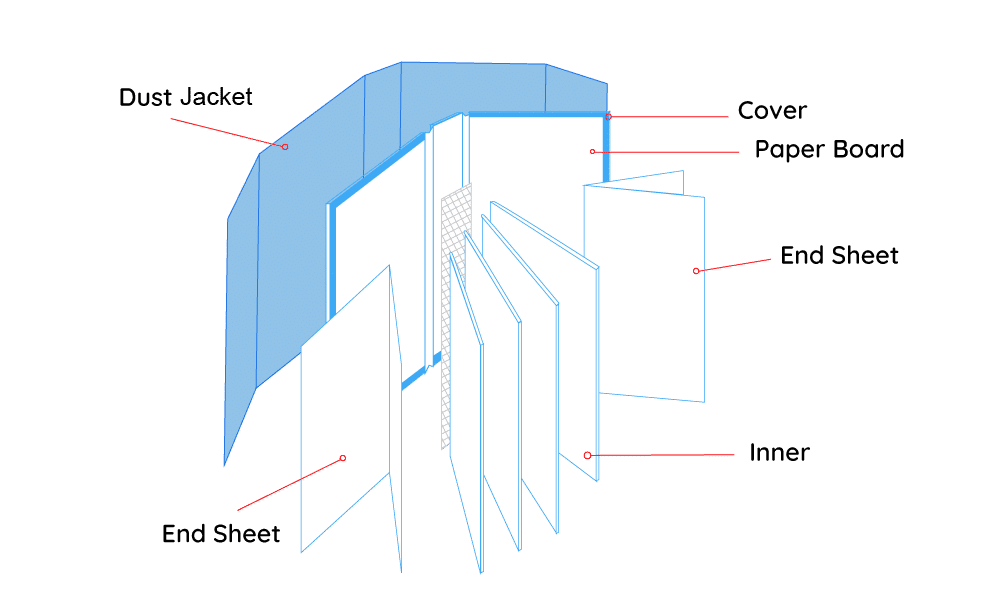
Minimum and Maximum Page Counts for Hardcover Binding
One limitation of hardcover bookbinding is the number of pages which the technique allows. This also depends on the style of spine you choose. If you opt for a square spine hardcover book, the minimum page count is 32 pages. If design a round spine hardcover book, the minimum page count must be 200 pages. The practical maximum page count for a hardcover book is several thousand, depending on the thickness of the paper and the overall size of the book.
The Anatomy of Hardcover Binding
Let’s look at the anatomy of a hardcover book. The basic format includes the following essential elements:
- interior pages, organized in signatures and sewn together
- end sheets—front and back—to which we glue the interior pages and the casing
- paperboard hard casing, composed of the front, the spine, and the back
- printed cover wrap, glued to the hard casing
We make the hardcover from a sheet of paper, vinyl, leatherette, or cloth wrapped on 2 mm, 2.5 mm, or 3 mm grayboard. The end sheets connect the casing to the interior paper. Because the end sheets work hard, being the core of the binding, we make them of thicker paper than we use for the inside pages. For example, with an 8.5″ x 11″ hardcover book with fewer than 200 pages, we would suggest 140 gsm offset paper for the end sheets. If the book has over 200 pages, or the book size is larger than 8.5″ x 11″, 180 gsm offset paper would be better. In most cases, we leave end sheets blank, but if you’d like them printed, then 157 gsm gloss or matte art paper would be a good choice.
We often recommend offset paper for unprinted end sheets, as its higher absorbency makes adhesion stronger. The interior paper can be any other regular book paper. For a hardcover book’s surface, you have a range of options from which to choose to enhance the look and appeal. For example, gloss lamination, matte lamination, spot UV coating, foil stamping, embossing and debossing, to name a few.
Dust Jackets and Slip Cases
While not strictly part of the binding, most hardcover books also include a “dust jacket” and, sometimes, a “slipcase”. So, let’s examine these options now.
A “dust jacket” is a popular and practical way of protecting a hardcover book. It finishes your book with a professional touch while adding five printable surfaces—front, back, spine, and two inside flaps. We can print it in full color, gloss coat it, matte coat it; emboss, deboss, laminate, and foil stamp it, too, for added effects. Dust jacket flaps are usually about 4″ to 8″ wide, depending on the size of your book, and afford ample space to add a hook or teaser on the front flap, say, and an author biography on the back flap.
Slip cases are less common, but for a high-end project, they’re a powerful way to add both upmarket style and extra protection to your hardcover books. We make them of printed paper wrapped on grayboard like a five-sided box, but tailored to the size of your book, with one side left open so that when the book is inserted, only the spine is revealed. We can make them to house one or more books. We can cover the grayboard with printed paper, cloth, vinyl, or leatherette, as you prefer. The slip case can be printed, embossed, debossed, laminated, spot UV coated, and foil stamped, too.
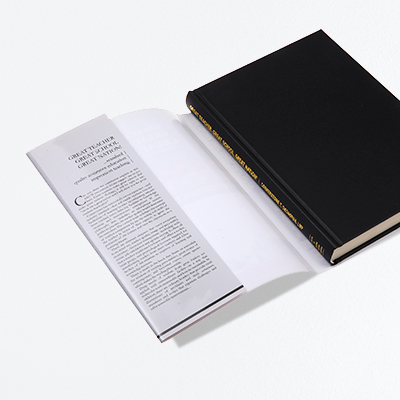
What Kind of Books Suit Hardcover Binding?
Several factors influence binding choice: conventions of the genre, the intended customers, material choices, design and artistic considerations, reader expectations, page counts, and the budget. But, in broad terms, we can say that hardcover binding is best suited to the following kinds of books:
- Coffee-table books
- Art books
- Cookbooks
- Special editions and compendia
- Academic books
- Certain children’s books
- Yearbooks
- High-end luxury catalogs
- History, memoir, and science books
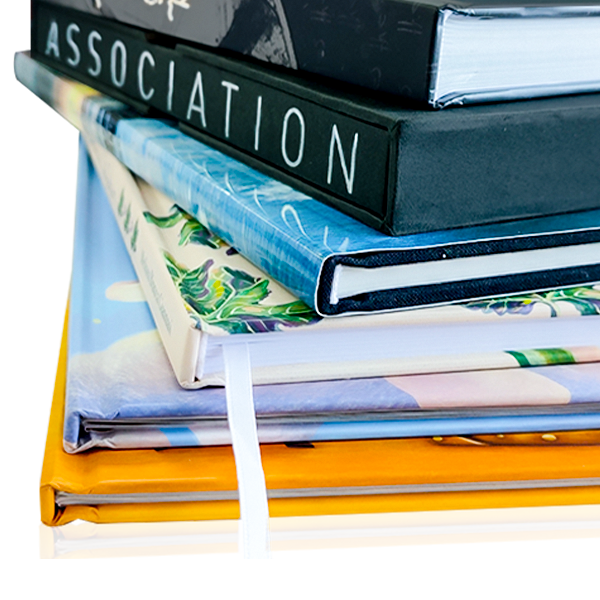
We won’t lie to you. Hardcover binding is the most expensive option of all—especially if you go for all the details and extras and special finishes. But if you need a stunning, sophisticated hardcover edition, you won’t find a service more cost-effective, high-quality, and customer focused than ours anywhere in the world. We’re not boasting. We’ve worked hard to develop a world-wide reputation for excellence and we’re dedicated to delivering superlative products with unparalleled care and support. It’s what gives us satisfaction.
The Advantages of Hardcover Binding
If you’re undecided about whether hardcover binding is right for your project, get in touch and we’ll be happy to discuss your needs and advise you. If we don’t think it’s the best option for you, we’ll make an alternative suggestion we think is more suited to your needs. In the meantime, here’s a list of several of the potential advantages of printing a hardcover:
- Durable—for a book that’s being read once and then handed to the thrift store, a paperback would be a better choice. But if you’re making a book that people will treasure and revisit for years to come, then the durability of hard case binding makes perfect sense and represents a viable return on investment.
- A fantastic range of special finishes—most of our customers who choose hardcover binding are deeply concerned about superior quality and aesthetic values. The options available for making a hardcover bound book into a truly unique and standout product are vast: round-cornering, embossing, debossing, die-cutting, metallic foil stamping, spot UV coating, varnishing, gloss lamination, matte lamination, soft-touch lamination, page-edge gilding, marker ribbons, colored decorative headbands, padded covers, dust jackets, and slip cases, for example.
- Optimal versatility—hardcover books needn’t be “hefty tomes” with thousands of pages—although they can be! They can also be small, with only a few dozen pages. You can design them for adults or children, for serious publications or more light-hearted ones, for artistic merit or for commercial interest. In short, the hardcover binding is not only the most beautiful and enduring, but the most versatile, too.
- Professional finish—if you need a binding method that will give you a professional quality finished product, then the hardcover binding is the method you need to approach. Nothing speaks of quality, class, sophistication, and style more than a well-designed hardcover book.
- Higher profit potential—while hardcover binding is more expensive than other styles, it’s not that much more expensive; but its higher perceived value in the eyes of customers means it can command a much higher retail price. If you are sure of sales—with an enthusiastic readership and a responsive email list, for example—a hardcover edition could represent a much higher profit margin per-unit than a paperback.
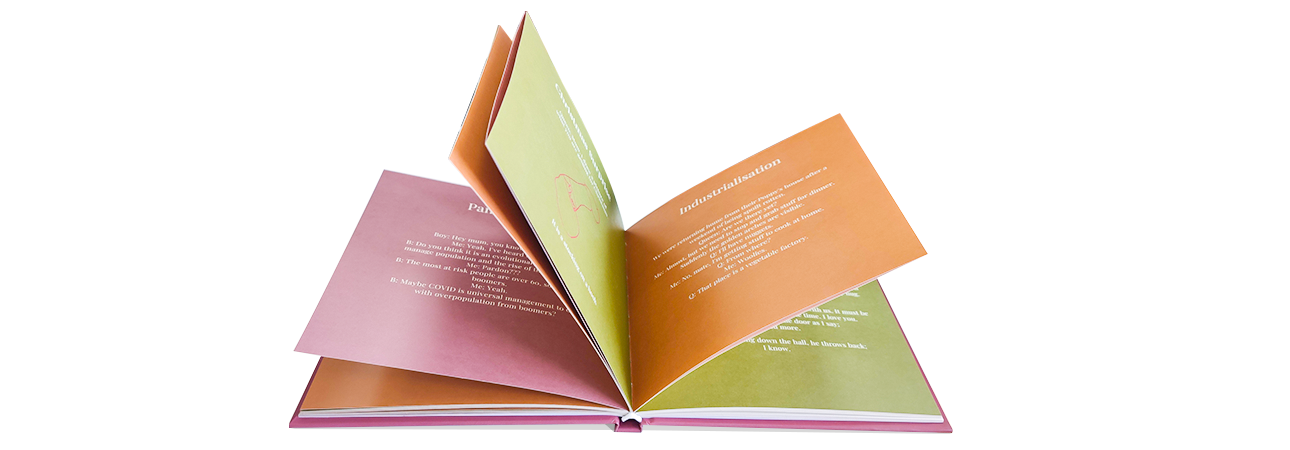
Need More Help? Let’s Talk!
Designing and printing an exclusive, high-end hardcover bound book either as a premium addition to your self-publishing strategy or as an independent business proposal is always a satisfying creative project which adds immense value to your portfolio of published work. Get in touch today to chat through your needs or to ask for a no-obligation quote. We can’t wait to help you make your custom hardcover book the most beautiful yet!
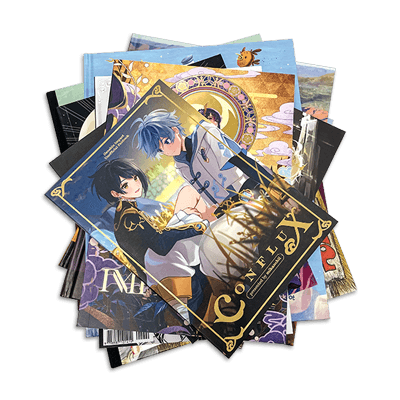
Start your printing project with QinPrinting
Explore all our different printing choices

